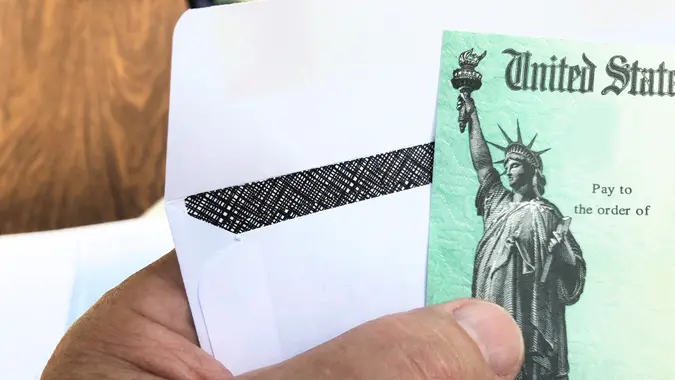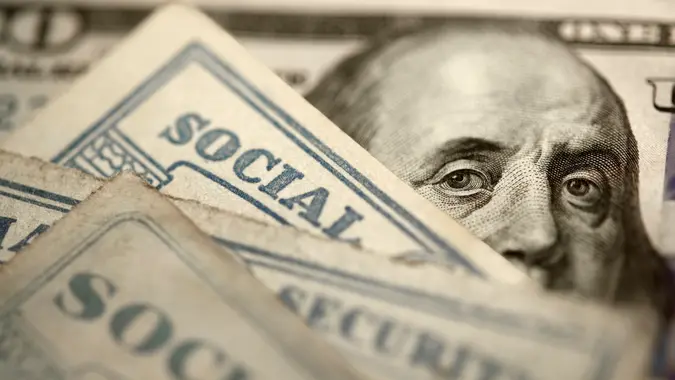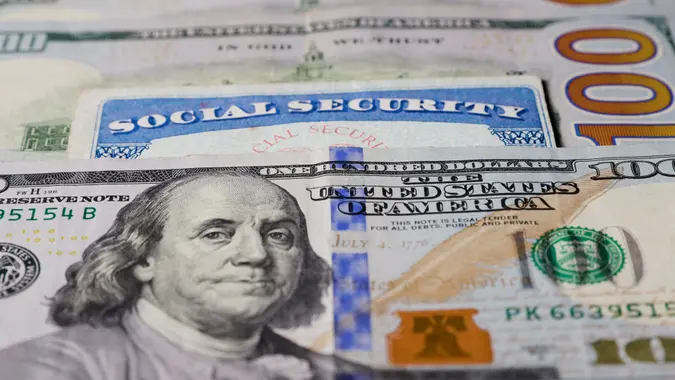Social Security Overpayments: 4 Ways To Protect Your Money in Case a Refund Is Requested

Commitment to Our Readers
GOBankingRates' editorial team is committed to bringing you unbiased reviews and information. We use data-driven methodologies to evaluate financial products and services - our reviews and ratings are not influenced by advertisers. You can read more about our editorial guidelines and our products and services review methodology.

20 Years
Helping You Live Richer

Reviewed
by Experts

Trusted by
Millions of Readers
Monthly Social Security payments used to be something retirees looked forward to — especially if they relied heavily on the checks to pay their bills. But ever since the Social Security overpayment scandal hit last year, many seniors might wonder about the consequences of spending the money they get from the program.
As of November 2023, the Social Security Administration had distributed more than $23 billion in overpayments, and the agency has been busy contacting recipients to pay it back. The situation landed Social Security officials in front of Congress and caused widespread confusion and anger over why it happened and how the SSA handled things.
As previously reported by GOBankingRates, the SSA’s latest Agency Financial Report revealed that the agency made about $11.1 billion worth of new overpayments to Social Security beneficiaries during federal fiscal year 2022, the most recent year data are available. That figure represents an increase of more than 65% from the prior year, according to KFF Health News. Over the past several years, the SSA has usually distributed between $6 billion and $7 billion in new overpayments each year.
“Benefits are overpaid when we can’t accurately calculate your benefit amount because our information is wrong or incomplete,” the SSA notes on its website. “It can happen if you don’t share updates with us about what’s changed in your life, like your ability to work, living situation, marital status or income.” But in some cases the SSA itself was at fault for making overpayments.
The SSA asks recipients who get a letter in the mail saying they got more money than they should have to pay the money back within 30 days. As of last October, the SSA had already “clawed back” about $4.7 billion in overpayments.
Many of those impacted by clawbacks are poor and disabled — and many of the mistakes run into very high dollar figures. One woman had to repay more than $300,000 because of a mistake the SSA made. Another woman got stuck with a repayment notice totaling more than $60,000, ABC News reported last year. A woman in Florida got hit with a demand letter for $121,000, payable in 30 days.
If you have received a notice of overpayment, here are four steps you can take to protect your money:
- Ask for a reconsideration. This is an appeal that means you want the SSA to look at your case again, according to the Pine Tree Legal Assistance website. You should request a reconsideration if you think the amount of the overpayment is wrong or that the reason the SSA gave for the overpayment is wrong.
- Request a waiver. Even if you agree that you were overpaid you can still ask the SSA to waive the repayment requirement. Pine Tree Legal Assistance recommends asking for a waiver if you think that the overpayment was not your fault and you can’t afford to pay the money back.
- Ask for a payment arrangement. This option is available if you think the overpayment was your fault and you also have the funds to pay the money back but would rather do so a little at a time instead of in a single lump sum. The amount of your recurring payment would be based on how much of your income you need for basic necessities.
If you want legal help with overpayments or clawbacks, get in touch with The National Organization of Social Security Claimant Representatives, which is staffed with attorneys who handle Social Security cases. In addition, some beneficiaries might qualify for free legal help from federally financed protection and advocacy programs.
 Written by
Written by  Edited by
Edited by 

























